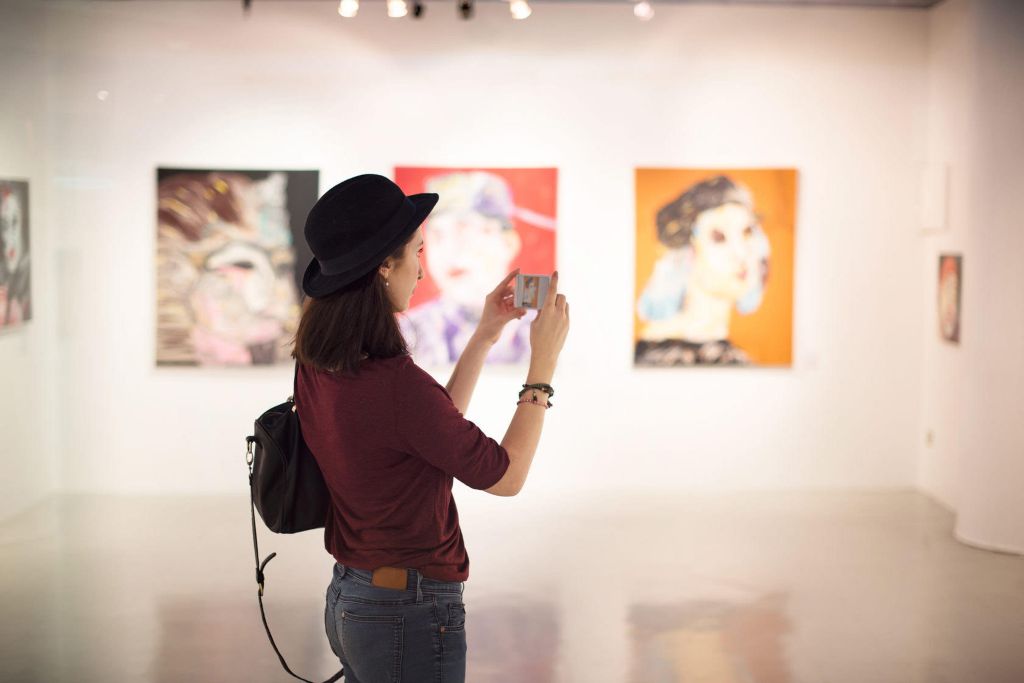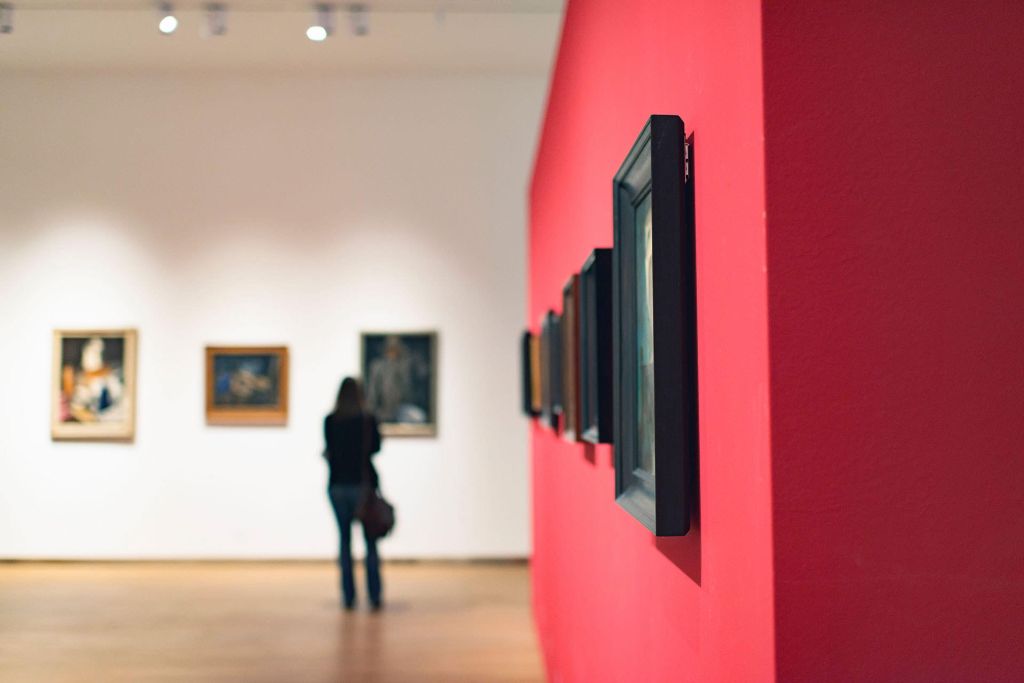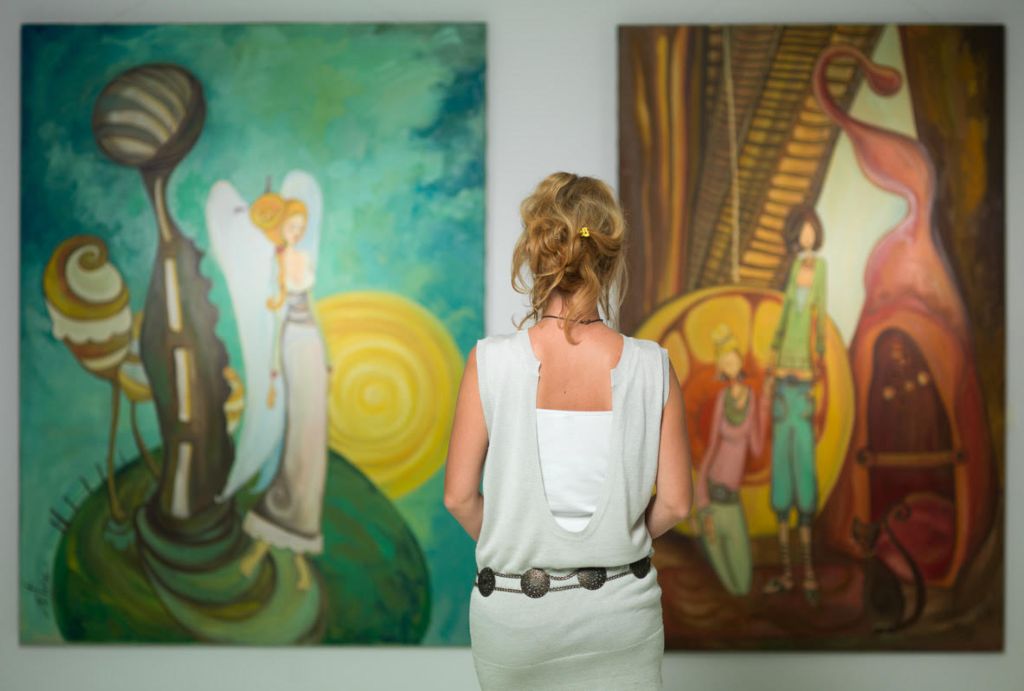
Each year, there are a number of news articles that talk about billionaire investors buying millions of dollars worth of artwork. So this got me thinking, should you invest in art? Is art actually a good investment?
In the investing community, art is generally considered to be a commodity, alongside things like oil, gold, natural gas etc. However, in reality, it acts more like an autonomous category inside the category of “commodities”.
This is mostly due to the fact that art has very little in common with other commodities.
Reasons to Invest in Art
There are a number of reasons why you should invest in art, these include:
High ROI
Over the last decade, art has, on average, increased in value by well over 100% (compared to only 19% inflation). Over the last forty years, the price of art has increased by well over 1,000% (compared to only 214% inflation).
This means that if you had purchased a piece of art worth $1 million ten years ago, the art would now be worth $2 million. In real terms, the art has increased in net value by roughly $810,000.
By the same token, this means that if you had purchased art worth $1 million forty years ago, the art would now be worth $11 million. In real terms, this means that the art has increased in value by roughly $8.86 million.
As you can probably imagine, art has outperformed both stocks and real estate by a comfortable margin, over both time periods.
Naturally, this has been the driving force for many investors, both small and large alike, to start investing in art. This has helped to make art such a popular investment in recent years.
With that being said, recent studies have shown this is only really the case for art worth upwards of $1 million. According to those same studies, most of those pieces of art worth less than $1 million don’t have any ROI to speak of.
Stable Market
With most assets, they float freely on the open market, with only the forces of supply and demand to determine their value. If demand is high, so are prices, whilst the opposite is also true.
However, with art, the same is not true. After all, there isn’t really a “stock market” for art, as most pieces of art are one of a kind, and probably always will be.
For the most part, the laws of supply and demand are sort of there with art, just not in the conventional sense.
You see, the value of the art isn’t determined by anything conventional. You could get a painting dating back to 1300 AD, and 1855 AD (of the same size), and the one from 1855 could be the more expensive of the two paintings.
This is because the value of a particular piece is based on a number of factors, although not exhaustive, these include:
- The artist (how notable were they at the time/since their death?)
- The era it was painted in
- The history of the piece itself (is their a special story surrounding the particular piece?)
- The patron (was he/she extremely wealthy or notable?)
- What it represents (all art has a deeper meaning, does this piece have a particularly deep/sentimental meaning?)
Whilst it may come across as strange, this does make determining the value of a particular piece of art quite easy. Naturally, the more boxes they tick, the more the piece is worth…
Diversification
As investors, no matter how big or small, we always look to diversify our holdings. For many of us, we are contempt with holding a portfolio of stocks, bonds, real estate, and maybe a little bit of gold or silver if we’re feeling lucky.
These are great ways to diversify, however, the market for all of these investments are based on the same principles. Art on the other hand, isn’t really built on the same principles. After all, there’s no stock market for art.
From an investing point of view, this makes art a great investment!
I’m not saying that diversifying in stocks, bonds, real estate etc. is bad by any means. However, throwing in some art on top of that will probably make your portfolio that little bit stronger!

This is because you’ll still hold assets worth something is all other “conventional” types of investments are down.
For your portfolio, this’ll likely see your portfolio maintain most of its value, even when most of your individual investments are down.
If necessary, this’ll allow you to sell your portfolio without losing too much in the grand scheme of things (as people still buy art, even in recessions and market corrections!)
A Way to Live The “High Life”
For the most part, I have only really talked about the financial benefits of choosing to invest in art. However, investing is still a very personal thing, even if we have to leave our emotions out of it.
Whilst it may come across as pretentious, investing in art is actually a great way to live what many will call the “High life”. As an art investor, you will often be invited to live the “high life” with other art investors.
By this, I mean, wearing the best clothes, drinking the best alcohol, and eating the very best food.
You see, most physical art auctions are catered events. Yes, the main event is the physical auction itself, but there are also periods both before and after the auction, where the attendees as a whole aren’t doing much.
Prior to the auction, the attendees are looking at the art, evaluating it one last time, before they get the chance to buy it. Following the auction, the attendees are paying for, and later recieving, their art.
As such, both times are catered for. Before the auction, drinks and food are offered, whilst it’s mostly drinks following the auction (although some auction houses do offer food following the auction too!)
As an art investor, you’ll also have the option to put your art on display in an art gallery/museum. Here, you’ll often be invited to promotional events, where you’ll get the same treatment once again.
Enjoyment Over Investment
For most people who invest in art, they don’t do what they do in order to increase the size of their portfolio, or to diversify it. Instead, they do it because they are genuinely interested in the art itself.
Many art investors are interested in the history of the painting- both what the painting depicts and the climate that influenced the painter to paint that piece. For many art investors, that’s the best part.
Others are interested in a particular artist, and are determined to own as many of his/her works as possible during their lifetime. Often, this is due to some form of connection to the artist themselves…
Although most art investors do not have their art on display at their home, some do. For them, this is often the best part of art investing: Being able to see it everyday, on display in their own home.
Whilst many art investors are investors, the art part of their portfolio is much more dear to them, than say, their stock portfolio. This is because they actually view art investing as fun, both buying it, selling it and having it!
From my own personal experience, most art investors fancied themselves as art connoisseurs long before they began investing in art. They just turned that passion for art, into a part of their portfolio.
Reasons Not to Invest in Art
Despite the aforementioned reasons, there are just as many reasons not to invest in art!
Taxes
When it comes to investing in art, taxes can become quite tricky. This is because there are often a lot of taxes that you may or may not have to pay, depending on the art itself.
Assuming you are buying a piece of art that’s over 100 years old, you won’t have to pay any form of sales tax on it. However, if it is under 100 years old, most countries consider it a trade, rather than an investment, therefore local sales tax will apply.
Many art investors will travel abroad in order to buy their art. Often, this is to places like Paris, New York and London, where there are an abundance of high-end auction houses.
After buying the art, many art investors will travel home with their priceless artwork in tow. Here, many countries apply import duties on the artwork, with different countries charging different rates.
However, if the art is over 100 years old, most countries will waive the import duties. With that being, not all countries do, so you’ll probably want to check with your local tax agency first!
When you come to sell your art, you will deficiently need to pay taxes. Selling art is considered to be capital gains income, and is taxed as such.
Over the past decade or so, capital gains tax has changed a lot. As an investor, you should be aware that it may change over the next decade. If it is raised, it will probably hamper your profits significantly.
Counterfeits And Reproductions
If you do any research into art whatsoever, chances are that you’ll hear about what are known as “Copies”. These are essentially licensed copies (reproductions) of famous paintings by famous artists.
Sadly, almost all of these reproductions are worthless. This is usually because they are seen by art investors as a cheap rip-off of the original. The only ones that have (some) value are reproductions of long-lost pieces of art.
Occasionally, unscrupulous dealers will attempt to pass these off as the original to unsuspecting investors. This is often through the use of deliberately vague and misleading adverts through second-rate auction houses.
Due to the immense profits that art investing often brings, some people attempt to create convincing forgeries of certain paintings. Thankfully, the majority are incredibly poor, and are obvious forgeries, even to untrained eyes.
However, some are actually quite impressive. A few are even good enough to get past the “experts” and end up going to auction, netting the forgers hundreds of thousands, or potentially millions of dollars.
Assuming you do your research and buy through reputable auction houses and/or art dealers, you’ll have nothing to worry about. This is because these institutions often check to see if they are forgeries or reproductions before they ever go to auction!
If you can prove that your painting is a forgery, you will often be able to get your money back, as auction houses/art dealers have insurance for this sort of thing, even if it is extremely rare.
It’s Really Expensive
If there’s one thing you probably knew before you starting reading this article, it was that art is expensive. But it’s not just expensive, sometimes, it’s really expensive.
Artists often spend weeks painting a mid-sized piece, putting in well over a hundred hours into creating the masterpiece. Even with modern wages, this wouldn’t have been cheap 150 years ago, let alone today!
Combine this with the artist being extremely famous, and 150 years of rich people owning the art, sees the average piece of art go for around $2 million (assuming it’s being sold through a reputable auction house such as Sotheby’s).
For most investors, they simply do not have the money to spend $2 million on art.

Luckily, there are cheaper alternatives, which are also sold by auction houses like Sotheby’s. Mainly, this is in the form of artwork from less well-known artists, however, these artists are still fairly famous in their own right.
For example, a Monet (from the Impressionist Era) can quite easily go for $2 million, often more. However, a painting by former British Prime Minister, Winston Churchill (also from the Impressionist Era), goes for $500,000.
To many investors, $500,000 is still a lot of money, even if it is from a bona fide war hero.
Even then, there are cheaper alternatives, usually more “modern” art (usually still 50 years old or so). These often cost as little as $50,000, however, these are from artists that aren’t “notable” enough to have Wikipedia pages…
Art is Non-Liquid
Let’s assume you have a bill of $10,000 that you need to pay quickly. With stocks or bonds, you could quite easily get the money together by the end of the day. All you’d need to do is sell your stocks/bonds on the open market.
This is why things like stocks and bonds are known as liquid assets- you can get rid of them quickly, should the need ever arise.
Art, however, is what we would call a non-liquid asset. As you can probably guess, this is the complete opposite, with it taking a long time to get the money out of your art.
Mostly, this comes down to how you sell it.
Naturally, you want to get the most amount of money for your art. The best way to do this is to sell it through an auction house, whose reputation and prestige will let other art investors know that your piece is authentic.
However, this comes with its own set of issues. You see, most auction houses only hold their art auctions once or twice a week. On top of this, they often require you to send the art before the preceding auction.
For a first-time seller, many auction houses will then hold the amount for a little while, to ensure that the buyer is happy with the art, before giving you the money (minus their healthy cut).
Due to this, it may be a week or two, before you get your money. By that time, the bill you needed to pay has gone into arrears, and you now have to pay extra charges on top of the $10,000 bill.
Maintenance is Expensive
It’s not just acquiring the art that’s experience, so is actually maintaining the art itself. After all, a poorly maintained painting is worth less to other investors, as the painting is noticeably damaged.
For those investors who wish to have their art of display for everyone to see, there are only a few places where they can store it to minimize damage. Even here, the art isn’t free from things like dust, which can lead to damage.
As a result, paintings need to be dusted regularly to prevent this. Most investors do this through having a cleaner and/or maid, both of which you’d need to pay for their time. Alternatively, you could do it yourself, which will only cost you, your time.
For those investors who would rather store their art more securely, there are a number of designated art storage vaults around the world, with the largest (and most infamous!) being the Geneva Freeport in Switzerland.
Naturally, these storage vaults don’t store billions of dollars worth of art for free. Instead, they charge. A lot. At the aforementioned Geneva Freeport, it costs as much as $1,000 per month to store a mid-sized painting!
Many investors may also choose to place their art on display in a museum or gallery. Whilst most museums/galleries will gladly display them for free, many are slowly beginning to charge an annual fee for this service.
This fee is supposed to cover things like security as well as insurance, should anything go wrong.
Should You Invest in Art?
Unfortunately, there is no right-or-wrong answer for this question. As with anything to do with investing, it is a hugely personal decision that only you can make, based on your own personal financial situation.
Personally, I have a portfolio largely made up of real estate. For diversification purposes, I also have a small(er) portfolio of stocks as well as some bonds… and yes, some art.
Whilst I won’t go into details for obvious reasons, I have a few paintings from the aforementioned Winston Churchill. In reality though, these paintings constitute only a small percentage of my entire portfolio.
And personally, that’s all I’m comfortable with.
Whilst it is a nice investment to look at (at least compared to my stocks and bonds!) I am very much aware of the dangers. I understand that my paintings in particular won’t have as much of an ROI as, say, a Matisse or a Van Gogh.
My take on whether or not you should invest in art is pretty simple. Don’t invest what you can’t afford to lose. Because, Murphy’s law states that, the worst possible outcome is the most likely one!
If you can’t afford to lose your investment, you may want to consider investing in precious metals such as silver, gold, platinum and/or palladium.
Do you invest in art? Do you want to? Tell me in the comments!


